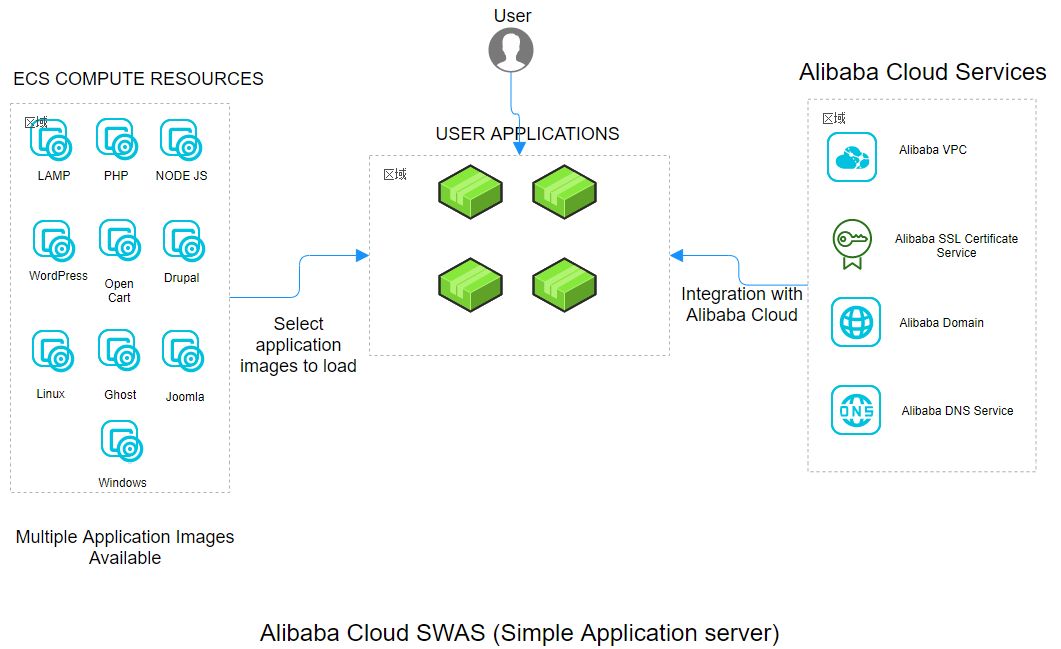By Shantanu Kaushik
Building a cloud ready application requires a calculated approach to build better performing and resilient applications. The very basic thing to focus on is the design prospective to follow while developing and deploying to public or private cloud. The common knowledge suggests that if an application is built for a specific platform, it will always work better on the said platform. What we need to understand is how to design and what approach to take while deploying or developing applications for either public or private cloud platforms. Alibaba Cloud cuts down on application dependencies and provides a better working environment while deploying apps for public or private cloud.
Making exceptions to cut down on costs or to not follow design dependencies properly can also ruin the overall application experience and will in-turn affect the application quality, reliability, and loss of business.
Here you will get to know five-point approach to build and deploy applications to provide maximum compatibility and resilience. We will be using Alibaba Cloud as our cloud provider and will be discussing solution focused on Alibaba Cloud Elastic Compute Service (ECS) and Simple Application Server among some other products and solutions.
Before we start, let us quickly look at how the Alibaba Cloud Simple Application Server works:

Now let us start with what platform you should use to deploy an application using Alibaba Cloud.
While developing applications for the cloud, you build over an architecture that can utilize complex distributed systems and can take advantage of assigned resources. The best approach in this scenario is always to design applications as a collection of cloud services or APIs.
Alibaba Cloud combines the power of Simple Application server, ECS, and OSS to provide you with an environment where you can develop and deploy this collection of services with utmost ease.
This collection of services while working together forms a bigger and better maintained application resource. The two pros of doing this is maintaining the application and availability of shared resources by different applications at the same time. It's more like writing functions and calling them according to need. This can be defined as service reusability.
This enables you as a developer to reuse code and services to achieve better end results with lower maintenance of separate applications while checking and securing the same code again and again. This break-out procedure makes sure that when you build you next application, you are not starting from scratch and you always have usable functionality to call and use from.
Before you think of an application, you need to understand the demands and requirements that would follow. These demands have to be registered and addressed in order to deploy your application with a complete and working subset. When we talk about Cloud, the first thing to discuss will mostly be the choice for the application code.
You can choose from IAAS (Infrastructure as a service), SAAS (Software as a service), or PAAS (Platform as a service).
IAAS as the name suggests, provides an infrastructure for you to deploy your applications. Alibaba Cloud provisions all the required infrastructure on-demand and just with a click. From servers to storage and backup solutions to a network. This enables you to focus more on application development and data delivery rather than how and when things should work. Taking out the human interface from the overall equation, this enables you to have a cost-effective solution with high availability.
Alibaba Cloud provides you with a Pay-As-You-Go and subscription models that are highly flexible and prove to be very useful depending on how much and when you are using the platform. Read more about this here.
However, IAAS requires you to install all the software counterpart including runtime environment, database links used by your application and other applications, over the infrastructure provided by Alibaba Cloud. Along with this, IAAS platform requires that you secure, update, and manage your software counterparts regularly.
PAAS works on top of an IAAS and provides everything other than your application code. This is very developer centric and is fairly useful when either you are just starting up in the application development field or you do not wish to incur high costs for software maintenance and system administrators. A proper use case would be for developers who wish to host applications and data associated with the application, without having to do anything at the backend.
Alibaba PAAS offers maximum scalability among any cloud providers I have come across. As a user, you have the options to adjust processing capacity to add more CPU and memory. Alibaba Cloud E-MapReduce is a known service that gives you a platforming in just about half an hour compared to weeks or months of time taken if you yourself provision an IAAS.
SAAS is a platform that provides everything except application data and users. As a developer, this is the least preferred model that I would choose, but many applications that are actively used by businesses and organization may prefer this platform. These applications are typically very popular and used by millions. Vendor provides the application code, updates, patches, and maintains everything in the mix.
Here is a comparison chart as found on www.alibabacloud.com

Here's another chart based on my personal opinion and understanding of this matter.
| IAAS | PAAS | SAAS |
| Complete control | Partial control | No control over infra |
| Need administrators | Complete focus on app | Easy to use |
| Team task requirements | Developer centric | Multiple generic hosted applications |
| Responsible for Security | System restrictions | Secure |
Always check before you select an IDE and start building your application. Make sure Alibaba cloud support it and has a plugin for it. Alibaba Cloud supports a wide choice of IDEs. Check out their starter packages before hand and choose your plan depending on your requirements.
Alibaba Cloud supports hot deployment of applications, provides its own Integrated Development Environment (IDE) for enhanced compatibility, and supports remote debugging.
[In the next part of this article](), we are going to discuss Data decoupling, Inducing security measures within the application, and Application design for enhanced scaling and performance.
It is very essential for every developer to match their application performance and scalability with other similar applications in the cloud-verse. Achieving that may be a feat that can only be achieved with a more real-life scenario-based development and proper planning of small systems within an application code. Follow the five-point approach we are discussing here and make sure to develop and deploy your applications with products that offer maximum in their respective field. Just like Alibaba Cloud ECS that provides elasticity to suit most scenarios and provides support like no other provider.
Cloud Application Architecture: Hosting & Things to Remember
5-Point Approach for Developers when Developing and Deploying Cloud Ready Apps (Part 2)

2,599 posts | 765 followers
FollowAlibaba Clouder - August 26, 2020
Alibaba Clouder - June 2, 2020
Alibaba Clouder - September 16, 2019
- March 8, 2018
Alibaba Container Service - October 12, 2024
Alibaba Clouder - March 6, 2019

2,599 posts | 765 followers
Follow ECS(Elastic Compute Service)
ECS(Elastic Compute Service)
Elastic and secure virtual cloud servers to cater all your cloud hosting needs.
Learn More Elastic High Performance Computing Solution
Elastic High Performance Computing Solution
High Performance Computing (HPC) and AI technology helps scientific research institutions to perform viral gene sequencing, conduct new drug research and development, and shorten the research and development cycle.
Learn More Function Compute
Function Compute
Alibaba Cloud Function Compute is a fully-managed event-driven compute service. It allows you to focus on writing and uploading code without the need to manage infrastructure such as servers.
Learn More Simple Application Server
Simple Application Server
Cloud-based and lightweight servers that are easy to set up and manage
Learn MoreMore Posts by Alibaba Clouder